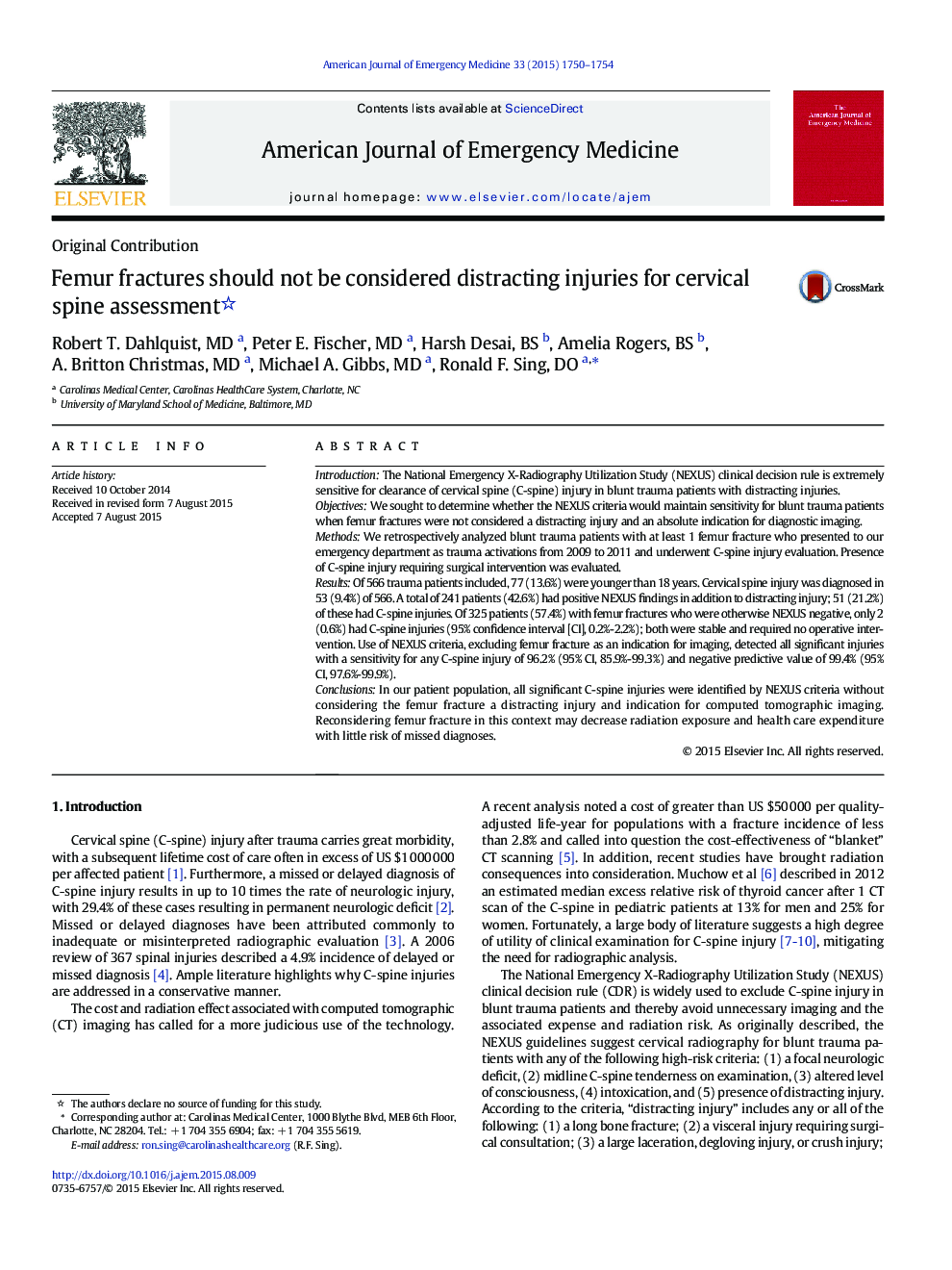| Article ID | Journal | Published Year | Pages | File Type |
|---|---|---|---|---|
| 3223524 | The American Journal of Emergency Medicine | 2015 | 5 Pages |
IntroductionThe National Emergency X-Radiography Utilization Study (NEXUS) clinical decision rule is extremely sensitive for clearance of cervical spine (C-spine) injury in blunt trauma patients with distracting injuries.ObjectivesWe sought to determine whether the NEXUS criteria would maintain sensitivity for blunt trauma patients when femur fractures were not considered a distracting injury and an absolute indication for diagnostic imaging.MethodsWe retrospectively analyzed blunt trauma patients with at least 1 femur fracture who presented to our emergency department as trauma activations from 2009 to 2011 and underwent C-spine injury evaluation. Presence of C-spine injury requiring surgical intervention was evaluated.ResultsOf 566 trauma patients included, 77 (13.6%) were younger than 18 years. Cervical spine injury was diagnosed in 53 (9.4%) of 566. A total of 241 patients (42.6%) had positive NEXUS findings in addition to distracting injury; 51 (21.2%) of these had C-spine injuries. Of 325 patients (57.4%) with femur fractures who were otherwise NEXUS negative, only 2 (0.6%) had C-spine injuries (95% confidence interval [CI], 0.2%-2.2%); both were stable and required no operative intervention. Use of NEXUS criteria, excluding femur fracture as an indication for imaging, detected all significant injuries with a sensitivity for any C-spine injury of 96.2% (95% CI, 85.9%-99.3%) and negative predictive value of 99.4% (95% CI, 97.6%-99.9%).ConclusionsIn our patient population, all significant C-spine injuries were identified by NEXUS criteria without considering the femur fracture a distracting injury and indication for computed tomographic imaging. Reconsidering femur fracture in this context may decrease radiation exposure and health care expenditure with little risk of missed diagnoses.
